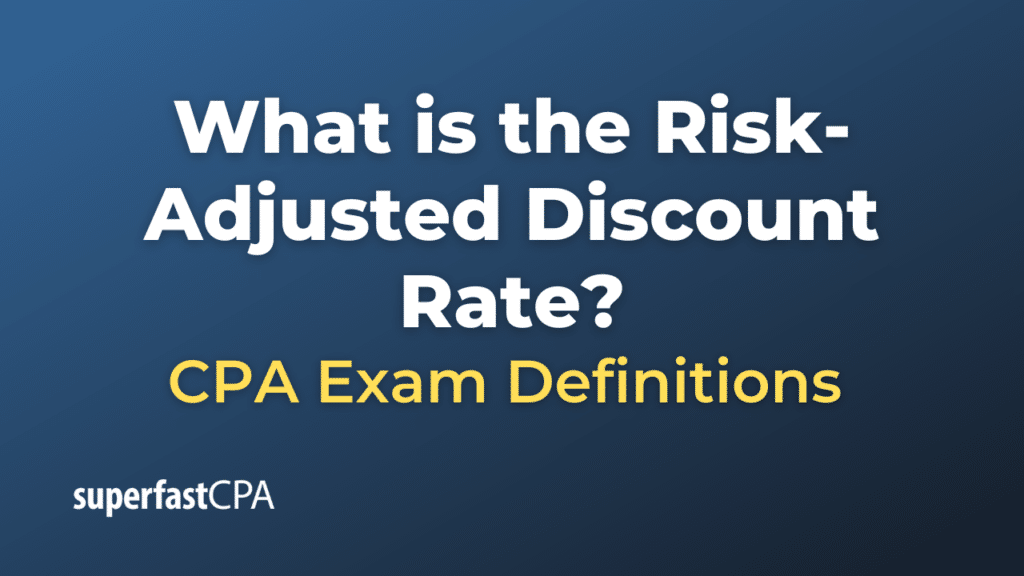Risk-Adjusted Discount Rate
The Risk-Adjusted Discount Rate (RADR) is a concept used in finance and investment to account for the risk associated with a particular project or investment opportunity. It adjusts the discount rate (typically the cost of capital) to incorporate the specific risk of the project, as compared to the average risk of the firm’s existing projects.
Here’s how it works:
- Base Rate: Start with a base discount rate, which is often the company’s weighted average cost of capital (WACC). The WACC represents the average rate of return a company needs to compensate all its investors (equity holders and debt providers).
- Risk Premium: Estimate a risk premium that reflects the riskiness of the specific project relative to the average project of the firm. If the project is riskier than the firm’s average project, the risk premium is positive. If it’s less risky, the risk premium might be negative or zero.
- RADR Calculation : The RADR is then calculated by adding the risk premium to the base rate (WACC):
RADR = WACC+Risk Premium
- Usage in NPV Calculation: The RADR is then used as the discount rate when calculating the Net Present Value (NPV) of the project’s expected cash flows. By doing this, the NPV calculation takes into account the specific risk of the project.
Example of the Risk-Adjusted Discount Rate
Company Z, which primarily operates in the consumer electronics sector, is considering investing in a new venture to produce electric vehicles (EV). This is a departure from its core business and is perceived to be riskier.
1. Determine the Base Rate (WACC): Company Z has a Weighted Average Cost of Capital (WACC) of 10%. This is the firm’s average rate of return required to compensate all its investors.
2. Assess the Risk of the New Project: Given the unfamiliarity and unpredictability of the EV market for Company Z, the financial analysts estimate an additional risk premium of 5% for the EV project. This is due to uncertainties like technological challenges, regulatory changes, and competitive market conditions specific to the EV sector.
3. Calculate the RADR:
RADR = WACC + Risk Premium
RADR = 10% + 5% = 15%
Company Z would thus use a 15% discount rate to evaluate the expected cash flows from the EV project.
4. Project Evaluation using RADR:
Suppose the anticipated cash inflows from the EV project over a period of five years, in millions, are as follows: Year 1: $5M Year 2: $10M Year 3: $15M Year 4: $20M Year 5: $25M
Using the RADR of 15%, the Net Present Value (NPV) for the project can be calculated by discounting these cash inflows. For Year 1: NPVYear 1=$5M / (1+15%)1
You would then repeat this calculation for each subsequent year and sum up all the individual NPVs to get the total NPV for the project.
5. Decision: Once the total NPV is computed using the RADR, Company Z can determine whether the project’s anticipated returns sufficiently compensate for its associated risks. If the NPV is positive and meets the company’s threshold for return on investment, they might proceed with the project. If it’s negative or too low, they might reconsider or abandon the venture.
This example demonstrates how the RADR can help firms account for the specific risks of individual projects, ensuring that investment decisions are made with a clear understanding of the potential rewards relative to the risks taken.













